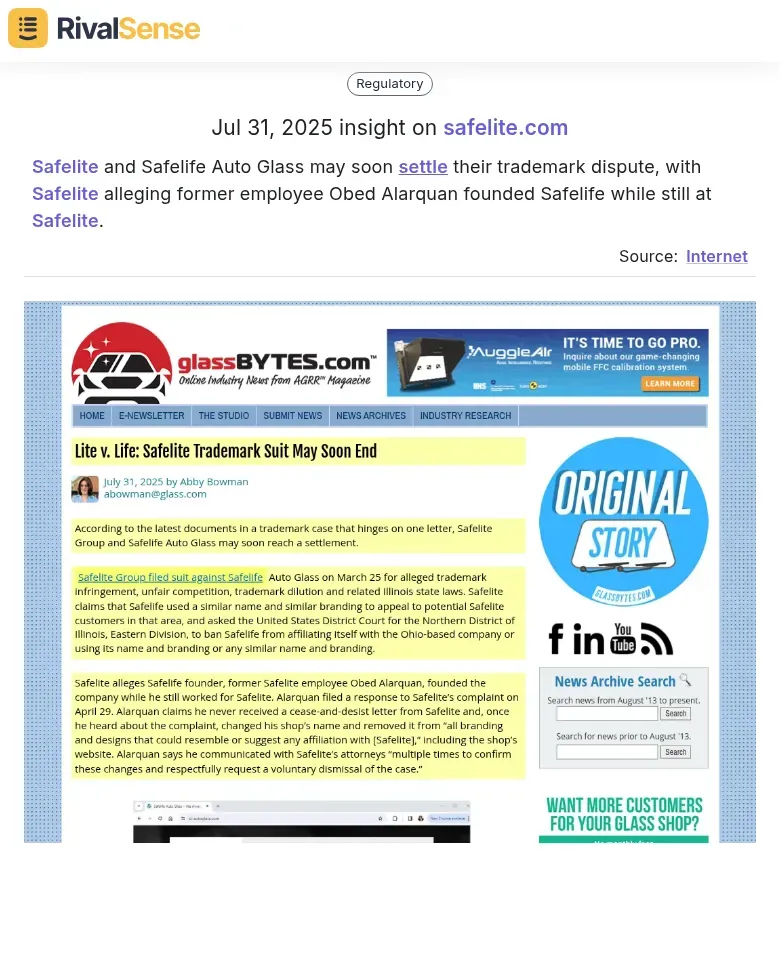Predictive Competitor Analysis: Turning Internet Insights into Strategic Wins
Predictive analysis revolutionizes how businesses anticipate competitor moves by transforming online data into actionable foresight. Founders and CEOs can leverage internet-driven signals to spot patterns indicating product launches, market shifts, or strategic pivots before they materialize. This proactive approach creates tangible competitive advantages, enabling timely strategic adjustments.
Internet insights emerge from diverse sources like social media, job boards, review platforms, and regulatory filings. For instance, a competitor suddenly hiring AI specialists might signal upcoming automation features. To systematically harness this intelligence:
✅ Monitor digital footprints: Track website/social media changes using automated tools
✅ Analyze customer sentiment: Uncover competitor weaknesses through review patterns
✅ Map SEO strategies: Identify content gaps using tools like SEMrush
✅ Benchmark industry movements: Contextualize competitor actions with market trends
Legal and Ethical Insights from Competitor Disputes
Legal conflicts reveal invaluable strategic intelligence about competitors' priorities and vulnerabilities. Trademark disputes, employee transitions, or regulatory challenges expose expansion plans, talent strategies, and operational risks—all while providing ethical learning opportunities.
For example, tracking trademark filings can uncover geographical or product expansion intentions:

Safelite and Safelife Auto Glass may soon settle their trademark dispute, with Safelite alleging former employee Obed Alarquan founded Safelife while still at Safelite. Monitoring such cases helps anticipate market entries and refine your IP protection strategy.
Actionable framework:
- Set Google Alerts for competitor names + "lawsuit" or "trademark"
- Cross-reference employee LinkedIn movements with product launches
- Analyze regulatory filings for compliance risks to avoid
Product and Marketing Innovations as Competitive Signals
Competitor launches and campaigns serve as early indicators of market trends and strategic focus areas. Analyzing feature sets, pricing models, and campaign timing allows businesses to anticipate demand shifts and adjust R&D pipelines proactively.
Seasonal collections often signal broader industry movements:

Loro Piana launched a 2025 Qixi Valentine's Day capsule collection featuring Art Nouveau-inspired prints and weather-resistant linen. Tracking such reveals helps predict material trends and informs your seasonal planning.
Execution checklist:
- Maintain a live competitor feature comparison matrix
- Reverse-engineer campaign ROI using social listening tools
- Thematic analysis of 3+ competitor launches to spot patterns
Cybersecurity Threats and Competitor Vulnerabilities
Data breaches and dark web exposures provide unexpected windows into competitor weaknesses. These incidents highlight security gaps that could impact customer trust, allowing savvy businesses to strengthen their positioning while mitigating similar risks.
Executive commentary often reveals critical vulnerabilities:

CloudSEK founder Rahul Sasi commented that compromised credentials from the CoinDCX heist sold for $10-15 on dark web markets. Such insights help benchmark security investments and craft trust-based marketing.
Mitigation steps:
- Monitor HaveIBeenPwned for competitor email breaches
- Analyze breach response times as reputation risk indicators
- Convert security gaps into competitive differentiators (e.g., "Zero-downtime SLA")
Integrating Competitor Insights into Business Strategy
Systematic competitor intelligence requires aligning data collection with strategic objectives. Prioritize tracking metrics directly impacting revenue—pricing shifts, partnership announcements, or leadership changes—then convert findings into executable plans.
Implementation workflow:
flowchart LR
A[Identify 3-5 key competitors] --> B[Track KPIs: pricing/features/coverage]
B --> C[Automate alerts for critical changes]
C --> D[Monthly SWOT workshops]
D --> E[Test insights via limited campaigns]
Cross-functional alignment:
| Department | Intelligence Application |
|---|---|
| Product | Feature gap analysis |
| Marketing | Campaign timing optimization |
| Sales | Competitive objection handling |
| Executive | M&A opportunity identification |
Conclusion: Operationalizing Predictive Intelligence
Proactive competitor analysis transforms market uncertainty into strategic certainty. By institutionalizing insight collection—from legal disclosures to product launches—businesses gain decision-making velocity while reducing reactive pivots.
Sustained execution framework:
- Automate tracking with specialized tools
- Pressure-test predictions through war-gaming sessions
- Embed insights in quarterly planning cycles
- Iterate based on prediction accuracy metrics
✨ Ready to decode competitor moves?
Get automated, actionable intelligence with RivalSense—track product launches, pricing changes, and legal developments in one weekly digest. Claim your free report today and transform insights into strategy.
📚 Read more
👉 Beginner’s Guide to Tracking AI Competitors Like Dust
👉 Competitor Product Insights: A Strategic Tool for Boosting Analyst Relations
👉 Decoding Competitor Moves: Martian's New Code Platform
👉 Automated Competitive Analysis Tools: The Ultimate Guide for 2025
👉 How to Leverage Strategic Market Intelligence in Accounting
